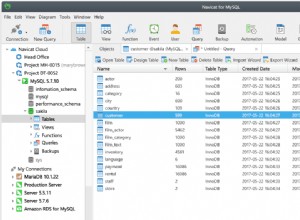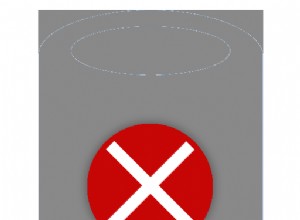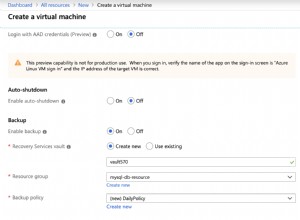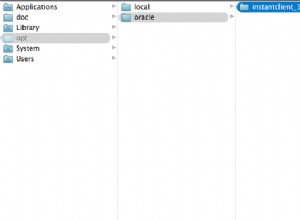मुझे लगता है कि इसका परिणाम "नल सहयोगी सरणी" मुद्रित होना चाहिए। सहयोगी सरणियों के लिए यह धारणा गलत है। घोषित होने पर वे मौजूद होते हैं, लेकिन खाली होते हैं। यह अन्य प्रकार के PL/SQL संग्रहों के लिए सही होगा:
तुलना करें:
SQL> declare
2 type varchar2_100_aa is table of varchar2(100) index by binary_integer;
3 test varchar2_100_aa;
4 begin
5 test(1) := 'Hello';
6 dbms_output.put_line(test(1));
7 end;
8 /
Hello
PL/SQL procedure successfully completed.
SQL> declare
2 type varchar2_100_va is varray(100) of varchar2(100);
3 test varchar2_100_va;
4 begin
5 test(1) := 'Hello';
6 dbms_output.put_line(test(1));
7 end;
8 /
declare
*
ERROR at line 1:
ORA-06531: Reference to uninitialized collection
ORA-06512: at line 5
परिवर्तनीय सरणी सही ढंग से की गई:
SQL> declare
2 type varchar2_100_va is varray(10) of varchar2(100);
3 test varchar2_100_va;
4 begin
5 test := varchar2_100_va(); -- not needed on associative array
6 test.extend; -- not needed on associative array
7 test(1) := 'Hello';
8 dbms_output.put_line(test(1));
9 end;
10 /
Hello
PL/SQL procedure successfully completed.
क्योंकि सहयोगी सरणी खाली है first और last शून्य हैं, यही कारण है कि आपका दूसरा उदाहरण ORA-06502: PL/SQL: Numeric or value error में परिणत होता है :
SQL> declare
2 type varchar2_100_aa is table of varchar2(100) index by binary_integer;
3 test varchar2_100_aa;
4 begin
5 dbms_output.put_line(test.count);
6 dbms_output.put_line(coalesce(to_char(test.first), 'NULL'));
7 dbms_output.put_line(coalesce(to_char(test.last), 'NULL'));
8 test(1) := 'Hello';
9 dbms_output.new_line;
10 dbms_output.put_line(test.count);
11 dbms_output.put_line(coalesce(to_char(test.first), 'NULL'));
12 dbms_output.put_line(coalesce(to_char(test.last), 'NULL'));
13 end;
14 /
0
NULL
NULL
1
1
1
PL/SQL procedure successfully completed.
संपादित करें यह भी ध्यान दें कि सहयोगी सरणियाँ विरल हो सकती हैं। first . के बीच की संख्याओं पर लूपिंग और last किसी भी संग्रह के लिए अपवाद उठाएगा जो दुर्लभ है। इसके बजाय first . का उपयोग करें और next
इस तरह:(last और prev दूसरी दिशा में लूप करने के लिए।)
SQL> declare
2 type varchar2_100_aa is table of varchar2(100) index by binary_integer;
3 test varchar2_100_aa;
4 i binary_integer;
5 begin
6 test(1) := 'Hello';
7 test(100) := 'Good bye';
8 dbms_output.put_line(test.count);
9 dbms_output.put_line(coalesce(to_char(test.first), 'NULL'));
10 dbms_output.put_line(coalesce(to_char(test.last), 'NULL'));
11 dbms_output.new_line;
12 --
13 i := test.first;
14 while (i is not null) loop
15 dbms_output.put_line(to_char(i, '999') || ' - ' || test(i));
16 i := test.next(i);
17 end loop;
18 end;
19 /
2
1
100
1 - Hello
100 - Good bye
PL/SQL procedure successfully completed.




